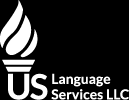Controlled Natural Languages
Seaspeak was created in 1985 to standardize how sailors and others on naval vessels communicated with each other. When a ship from an English-speaking location such as the United States would like to ask for assistance from a passing ship from, for instance, Brazil, the language barrier can quickly become a problem. Seaspeak allows these ships to relay information without either party needing to be fluent in the other’s language.
How is this accomplished? Seaspeak works because it is simple. It is categorized as a controlled natural language—a linguistic niche specifically created to transform an existing language into one that is rigidly structured for a purpose. In the case of Seaspeak, the objective is twofold: to create a common language shared by sailors from any location and to simplify the meanings of the most common utterances maritime workers may use.
Both of these elements are critical. If a sailor cannot understand the message of the person on the other end of the radio, vital information, such as the location of a person overboard or an upcoming hazard, can be lost entirely. Similarly, if one were to rely solely on an uncontrolled language (such as basic spoken English), ambiguity can quickly interfere.
Suppose you are sailing from the United States to Japan across the Pacific. You encounter a ship from a port near Tokyo, signaling your attention. You reach them on the radio but cannot hear what they’re saying due to static. You respond, “I can’t understand you.” How are the Japanese sailors supposed to interpret this declaration? If they don’t know English, they might be unclear about whether their meaning is being lost, if there is a problem with their radio, or something else. Seaspeak removes this ambiguity by creating a highly condensed (i.e., “controlled”) language for which the meanings of utterances are always the same. The tight level of control also limits the number of possible statements, making Seaspeak accessible to learn.
Learn Some Seaspeak!
Because Seaspeak is meant to be understood by people from various backgrounds and languages, anyone can pick up some basics!
Message markers
To clarify exactly what a person wants to communicate, seaspeak comprises eight specific “markers.” These identify the type of statement that will follow, which assists the listener in understanding the meaning. They are:
- Advice
- Answer
- Information
- Instruction
- Intention
- Question
- Request
- Warning
Simply place these words before an utterance to use them:
“Warning: lobster pot ahead.”
“Question: what is the name of your ship?”
“Answer: the ship is named Europa.”
Repeated phrases
One primary goal of Seaspeak is to standardize the meanings of common concepts into easily repeatable, consistent phrases. This removes potential ambiguity and reduces the number of words a person needs to learn.
One very simple example is the phrase “say again,” which, as the instruction implies, means that the speaker should repeat what they said. This quick utterance encapsulates many situations: when the radio breaks up, when a person’s speech is unclear when there is background noise, and so on. Anyone can learn to both say and understand “say again.”
Another example of a phrase repeated consistently over time is “mayday.” The term “mayday” immediately conveys that an emergency has occurred and is instantly recognizable without context.
Numeration
Just as words are not the same across languages, neither are numbers. An English speaker may say that the number 50 is “fifty,” while a Japanese speaker may use “gojyuu,” which means “five and ten.” To standardize numbers across speakers, every number is conveyed in Seaspeak individually. The number 50 becomes “five zero,” and the number 22 becomes “two two.”
Bridging Language Barriers: The Power of Seaspeak
Why does Seaspeak work so well? There are a few reasons that this manufactured language style streamlines communication:
- Cadence – Because Seaspeak relies on such a tightly controlled body of words and phrases, even those who are not native speakers can identify phrases solely by their cadence. In the previous example, “say again” tends always to be pronounced as _ _ / in cadence.
- Syllables – As with cadence, syllables also allow listeners to narrow down which potential meanings are possible. They can know that they are not being asked to repeat themselves if they do not hear [.] [.] [.] (three syllables). Thus, they have context clues even if they miss the exact words.
- Consistency—Seaspeak standardizes concepts by using the same wording over and over. “Repeat yourself” will always be “say again,” not “huh,” “what,” “I’m sorry,” or “could you repeat that?”
While modern maritime language might not have the same flavor as language from the age of sail, it too maintains its own unique identity and value. As the world continues to become more complex technologically and culturally, it is entirely possible that additional controlled languages for computers and other concepts may arise to enrich the world’s linguistics further!


